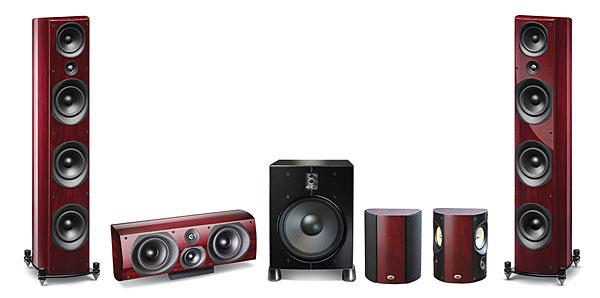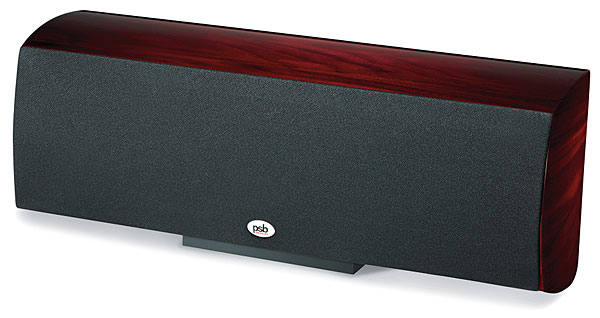I have noticed a lot of companies like Def Tech, Golden Ear, and now PSB are releasing ultra high end towers but not matching centers and surrounds. I see Golden Ear recently released a higher end center and PSB has as well, but why do they do that but not offer matching bookshelf or surround speakers? I hear very good things about the Imagine B and Imagine S, but it doesn't seem that they would match the T3 and C3 in basic or atmos surround set up as well as B3 or S3. And if someone is going to step up to the T3 and C3, why wouldn't they want to step up to a B3 and or S3 as well?
PSB Imagine T3 Speaker System Review

AT A GLANCE
Plus
Reference-class sound reproduction
Near-perfect center-
channel matching
Versatile dipole/bipole/double-monopole
surrounds
Excellent finish quality
A bargain—for high-end speakers
Minus
Surround-mode change requires rewiring
Cheap for high end—but not cheap
THE VERDICT
A superb loudspeaker system from top to bottom—surely one of the best affordable high-end options available.
When you hook up a PSB speaker—pretty much any PSB speaker—you have a very good idea of what you’re going to get. To wit: balanced octave-to-octave response that fits a tight decibel window from the design’s lower limit to its upper; off-axis curves that are similarly smooth and “well bundled,” rolling off higher frequencies progressively at more extreme angles but without sudden discontinuities; impressive-for-size low-end extension without any enhanced, bass-sweetening pre-rolloff response hump; a reasonably unchallenging impedance curve for easy-to-drive amp-friendliness, and coherent, strong stereo imaging promulgated by carefully derived driver locations and spacings and by a diffraction-free cabinet design.
These parameters are hardly revolutionary: They’re straight out of the loudspeaker designer’s hornbook. But for 40-plus years, PSB has been counted among the very best at nailing them to great effect and reasonable cost, a fact due in no small part to the close relationship forged over the years between the firm’s co-founder and chief designer, Paul Barton, and Canada’s National Research Council in Ottawa. The NRC features one of the world’s premier anechoic chambers and associated acoustical-research facilities, where both fundamental study and practical development are pursued by PSB—as well as by many of Canada’s numerous other speaker houses.
In PSB’s lineup (as in most others, of course), the more you spend in both money and floor space, the tighter the response window and deeper the bass extension you’ll get. In the brand’s current lineup, the upper limit of both is defined by the flagship, full-sized, floorstanding Imagine T3 tower. (The folks at PSB have recently rationed their offerings down from three or four distinct in-room lines to just two: the premium Imagine range and the value-priced Alphas.) The T3’s datasheet specs on-axis frequency response of 30 hertz to 20 kilohertz within a 3-decibel window (±1.5 dB), with 30-degree off-axis response matching this up to 10 kHz. This is pretty rarified territory, but in PSB’s case, at least, I’m inclined to believe the claims. (Full disclosure: I’ve known Paul Barton, professionally, for much of his career, and he’s a science-based guy. Plus, he’s Canadian.)
PSB sent us a pair of T3s—tall, slim three-ways whose rounded cabinets are beautifully finished in really fine cherry veneers, resting on cast-aluminum bases adaptable to spikes or glides. Both are supplied, as are full-height fabric grilles, but the fully finished towers are so handsome naked that I never even unpacked the grilles. To complete a 5.1-channel system, the Canadians included their top center-channel speaker, the three-way Imagine C3 (also cherry), and a pair of Imagine S “Tri-Mode” surrounds, double two-ways that can adapt to dipole, bipole, or individually addressable, dual two-way surround/rear function depending on hookup and jumper layouts. (Our S samples were gloss-black, but cherry is also available, and slightly cheaper.)

Unpacking the T3s was no day at the beach. They arrived double-boxed, with outer cartons nearly as tall as myself, and at 71 pounds each, the towers are no lightweights. With that heavy lifting done, I placed the T3s in my usual locations about 3 feet from the front wall, the C3 center in my equally well-established spot atop a low stand just below the bottom edge of my 52-inch LCD set, and the S surrounds on high shelves flanking the listening position. I started out with the surrounds wired as dipoles, my preference for movie sound.
Although hardly necessary to support the T3s’ specified 24-Hz low-frequency limit (–3 dB), PSB also sent along their 12-inch SubSeries 300 subwoofer—whose own low-frequency –3-dB point is actually spec’d higher, at 27 Hz. This went in my proven subwoofer spot, just outside and behind the right-front tower.
The Beat of Stereo
As I always do, I began with unprocessed, full-range stereo listening: two channels, no subwoofer, just the T3s and my pre/pro’s stereo-direct mode. What I heard matched my expectations almost perfectly: open, utterly uncolored midrange on even the trickiest male vocals, effortless yet airy top-octaves extension with no hint of tizz or sparkly highlighting, and fully authoritative deep bass.
- Log in or register to post comments






































































